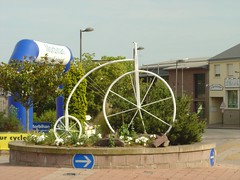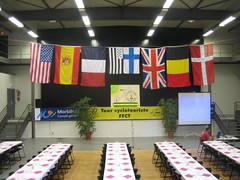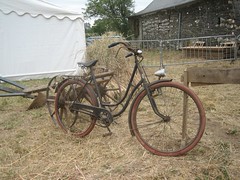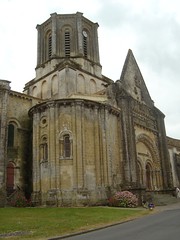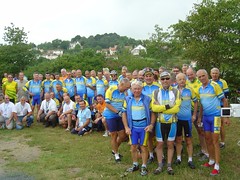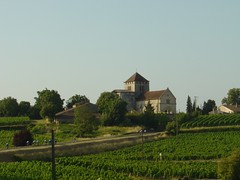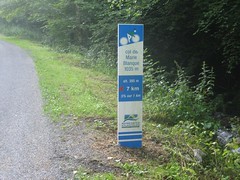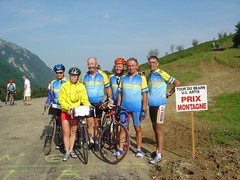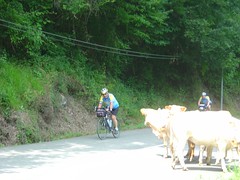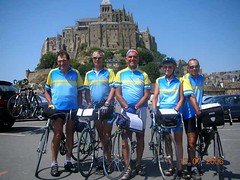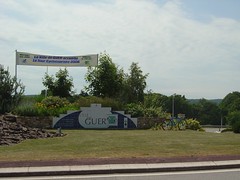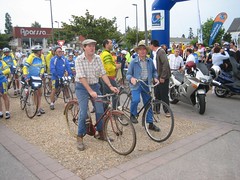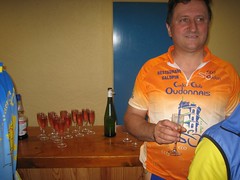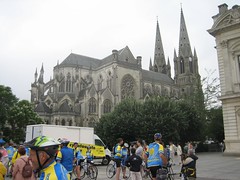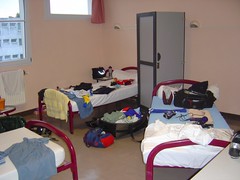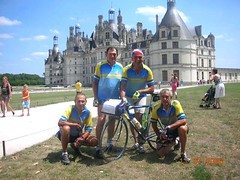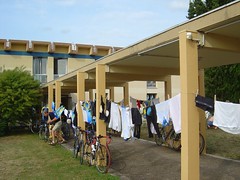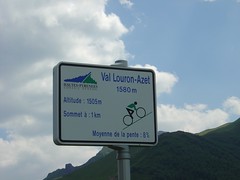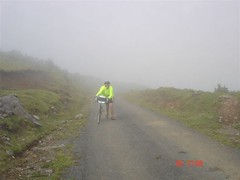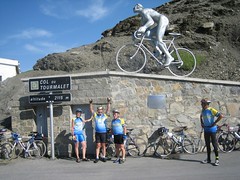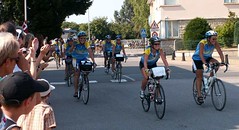Training Camp at CTS - Colorado Springs
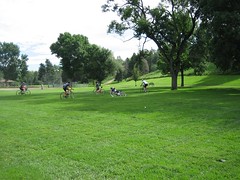 then
thenIn fact, my expectations were more than met. Not only did I have a chance to have lunch with Kate and also to roam around the huge facilities that CTS has there, but I actually benefited from the camp and learned a few new things.
I thought traveling to Colorado Springs was going to be a nightmare, with a terror threat in London and much tighter security at airports. But everything went smoothly. I was at the airport with three hours to spare and took only 15 minutes to go through security.
The first day at the camp did not go too well. In the morning, we did drills on a field to learn how to improve our bike handling skills, doing track stands, weaving the bike through bottles on the ground, picking up bottles from the ground while riding and playing a game "the gladiators" where we were supposed to eliminate other riders from a square area by either forging them to put a foot down, or driving them out of bounds. I did well on that last game only because I managed to stay out of trouble, waiting for the others to eliminate themselves.
The ride was about learning to ride on pace lines, single, double and rotating. The leading coach allowed the pace to get far too
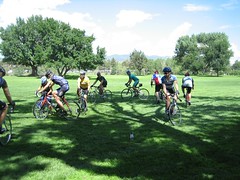 fast and it became difficult just to stay with it. At some point, while drafting, my heart rate went up to 166. So, I made it very conspicuous and dropped way back. After that, the pace became a little more reasonable and the remainder of the ride went well.
fast and it became difficult just to stay with it. At some point, while drafting, my heart rate went up to 166. So, I made it very conspicuous and dropped way back. After that, the pace became a little more reasonable and the remainder of the ride went well.The next day was about climbing and cornering. I thoroughly enjoyed climbing at 85 rpm cadence. We did three intervals of 8 minutes each of climbing, at high intensity, and I liked it a lot. In the afternoon, we practiced cornering on a short one mile course at a place called "Gardens of God", and I think that this will improve my cornering ability quite a bit. It felt goo.
On Sunday, only one ride for the camp, which was supposed to include climbing, cornering and pace line. We did all of that and it was quite a pleasant ride.
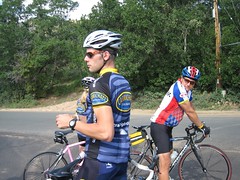
However, I was saving myself a little as I was planning to ride up the Ute Pass as soon as the camp was over. Chris Carmichael showed up for the closing of the camp, which I thought was a nice thing to do. We had a chance to exchange a few words with him before I set out on my climb.
The Ute Pass turned out to be a little more difficult than I anticipated. Another lesson of humility from cycling. Don't brag about your upcoming ride, only talk with honesty about the last one.
Ute Pas is long and is not a steady climb. There are easy portions, some a little more steep (7% grade) and it is long. Also, the heavy traffic makes it a rather unpleasant ride. It is very safe as there is a shoulder available almost all the way up, but
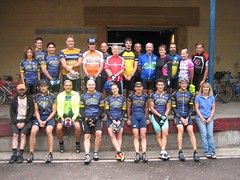 still, noise and traffic don't go well with cycling. It took me 2 hours and 45 minutes to ride the 27 miles from Colorado Springs to Ute Pass (Jason told me that it takes him 1 hour 15 minutes) but only 1 hour and 18 minutes to get back.
still, noise and traffic don't go well with cycling. It took me 2 hours and 45 minutes to ride the 27 miles from Colorado Springs to Ute Pass (Jason told me that it takes him 1 hour 15 minutes) but only 1 hour and 18 minutes to get back.This gave me time to pack my bike that sunday afternoon, pack my bags and go fo
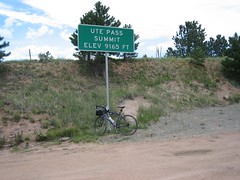 r dinner, with basically nothing to do on Monday before catching my flight at 3:30 in the afternoon.
r dinner, with basically nothing to do on Monday before catching my flight at 3:30 in the afternoon.Another good event under my belt, to add to my cycling memories. As usual, I have posted a few pictures of the camp on my library of photos in an album called "bicycling in the US", but my pictures about the Tour Cyclotouriste FFCT 2006 an still be found in a dedicated album.
